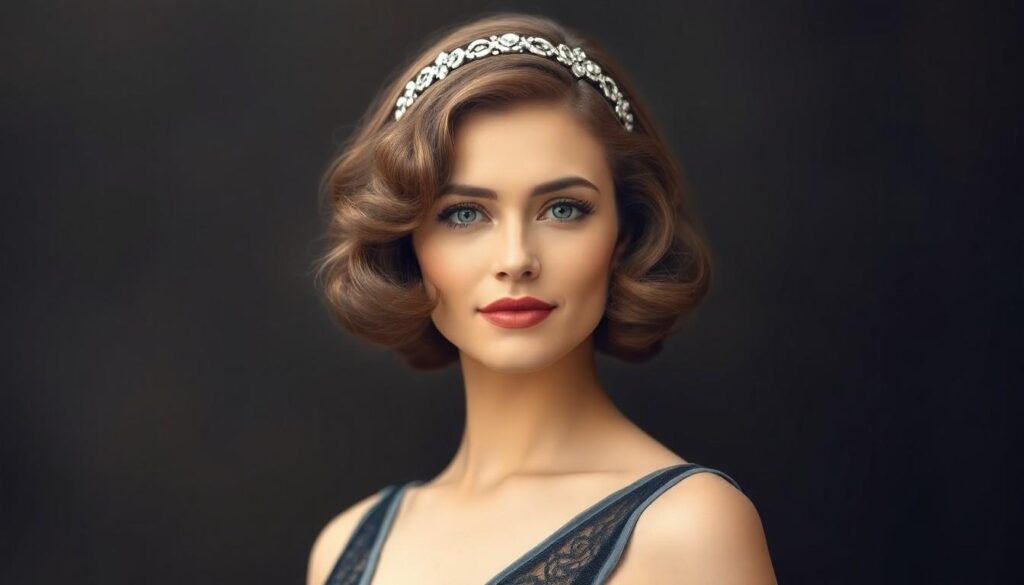There’s something undeniably captivating about the glamour of the Roaring Twenties. The bold fashion statements and daring new hairstyles from that era still inspire us to break free from the ordinary. If we’ve ever wanted to channel our inner flapper or add a touch of vintage flair to our look, 1920s hairstyles for short hair are the perfect way to do it.
We don’t need long locks to embrace the spirit of the Jazz Age. With a few clever styling tricks, we can create chic, head-turning looks that capture the essence of the 1920s. Let’s explore how these iconic styles can transform our short hair into a statement of confidence and timeless elegance.
Exploring Iconic 1920s Hairstyles for Short Hair
Finger waves top our list as the most recognizable 1920s style for short hair. We create this dramatic look by sculpting “S” shapes along the hairline using a fine-tooth comb and styling gel. Nothing captures the polished, glossy finish of the Roaring Twenties quite like these defined, smooth waves.
The bob always stands out as the classic short haircut from this era. When we keep our hair cut blunt at chin length and pair it with a sharp center part, it frames the face in that true vintage fashion. Adding a sparkly headband or art deco clip instantly modernizes the traditional bob while maintaining its authentic 1920s roots.
Soft pin curls give our hair playful volume and texture. We form these by curling small sections of hair into flat spirals and pinning them close to the scalp until dry. When released, the result is structured, bouncy curls that echo the flapper spirit.
Sleek side parts look effortlessly chic on short hair. We sweep our locks deep to one side with a touch of pomade for shine, letting the style echo the clean minimalism favored by many style icons of the decade. Pairing this with jeweled hair pins gives the look evening-ready appeal.
Accessorized styles work as finishing touches for any 1920s-inspired hairdo. We love adding jeweled combs, feather headbands, or pearl barrettes, especially for themed parties or events. Using these accessories, we bring even the simplest style into the glamorously rebellious industry of the Jazz Age.
Embracing the Classic Bob Cut
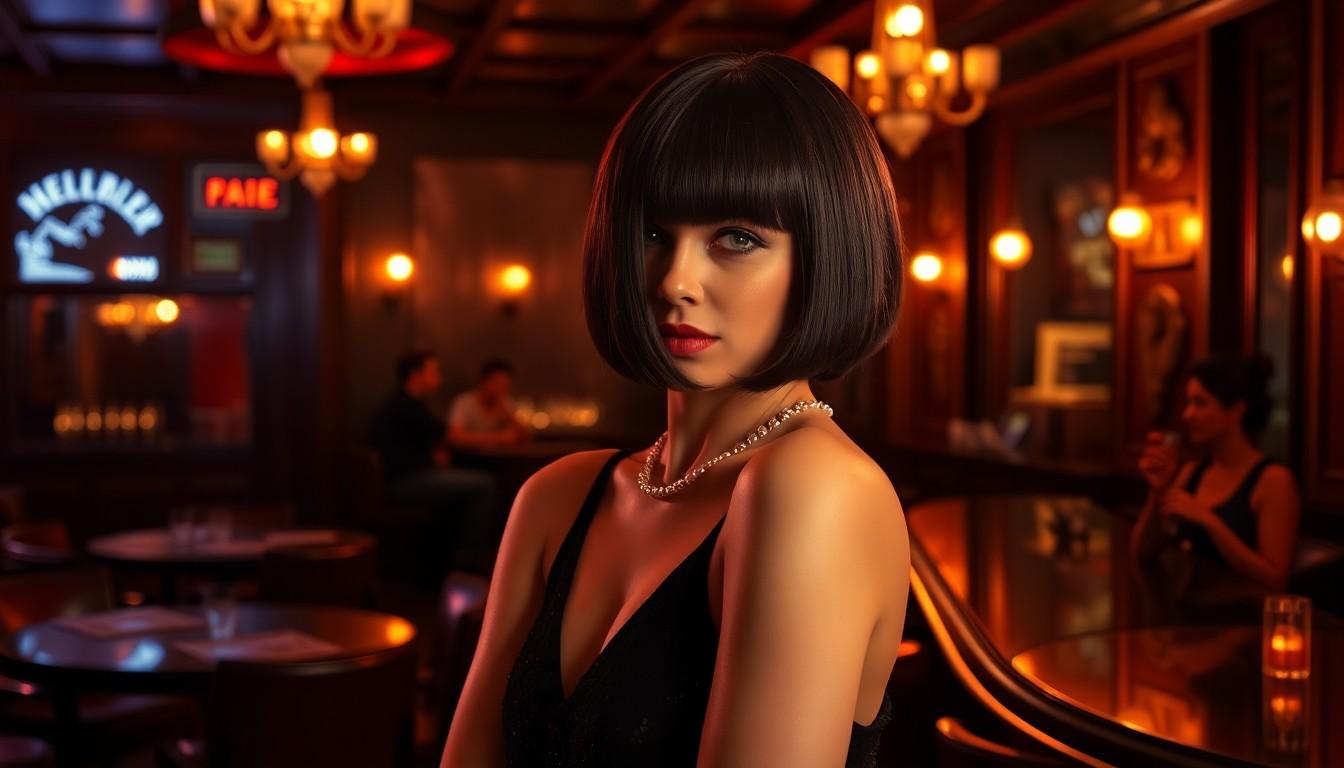
Let’s talk about one of the most revolutionary short haircuts from the Roaring Twenties: the classic bob. Hollywood icons like Josephine Baker and Colleen Moore made this hairstyle iconic, turning it into a symbol of independence and modern style for women everywhere.
Sleek Straight Bob Styles
We see why the sleek, straight bob defined the decade’s style. This look involved cropping hair just below the chin or above the ears and styling it perfectly smooth against the head. Many women applied setting lotions or pomades to shellack curls flat for an ultra-sleek finish. Chic parties and jazz clubs often featured women with these sharp, elegant lines. We love how this style broadcasts confidence and modernity without any fuss.
Wavy Bob Variations
Some of us prefer a little more movement, and the wavy bob was just the answer in the 1920s. People would cut hair to frame the face but leave in soft natural waves, using finger-waving techniques or special lotions to accentuate texture. You’d spot the curly bob at lively dances, as it kept its flirtatious bounce well into the night. The shingle cut, with its dramatic angles close to the head and jaw, was another favorite among bold trendsetters. Both styles showed the versatility of the bob while reflecting the playfulness that defined the era.
Creating the Finger Wave Look

Finger waves gave 1920s short hair its iconic, sculpted glamour. We can easily recreate this timeless style with a bit of patience and practice.
Step-by-Step Guide to Finger Waves
Start the process with damp hair because waves shape best when the hair isn’t dry or frizzy. Next, we divide our hair into even sections, choosing more sections if we want tighter waves. Place your fingers firmly around a section, then use them to push the hair into an S-shaped curve. Then, hold that bend in place for a few seconds so it sets, or add a classic hair clip for extra security. Move down the section and repeat this motion, creating a series of uniform waves. After shaping every section, let the hair air dry, or use a setting lotion to lock in the waves and keep frizz at bay. Finally, release the clips and run our fingers very lightly through the waves to soften the look, but avoid over-brushing for that authentic ‘20s sheen.
Suitable Hair Textures for Finger Waves
Medium to fine hair types hold finger waves with the most ease, providing a defined yet soft finish. We notice wavy or curly hair creates natural depth for each wave, making the style last longer and look more dramatic. Straight hair can still work—especially if it has a bit of natural texture or we prep with mousse or a holding gel for extra grip. Using the right products customized for our unique hair texture helps us get those flawless, flapper-inspired waves every time.
Styling the Faux Bob for Short Hair
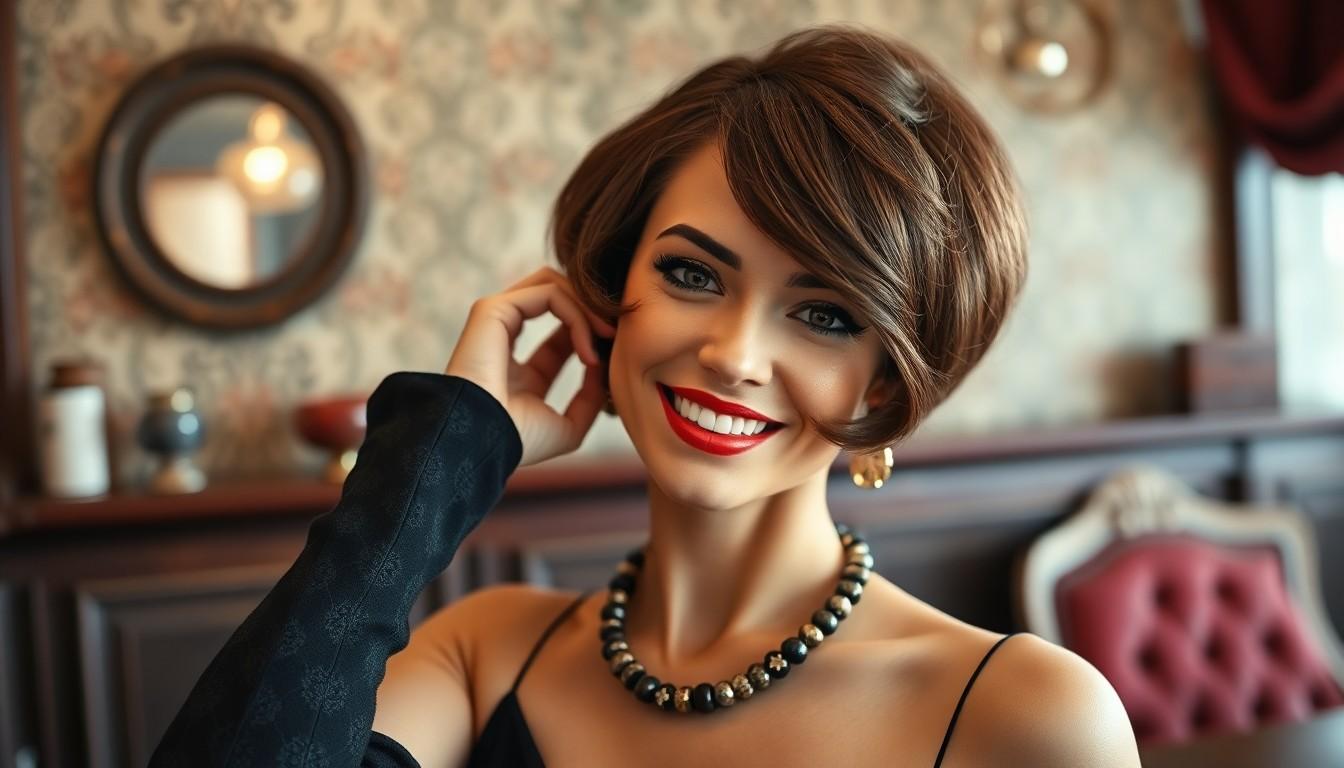
Creating a faux bob is one of our favorite ways to capture that vintage 1920s glamour with short hair. By tucking and pinning, we can mimic the classic bob shape and add a playful, era-appropriate twist to our look.
Tools Needed for a Faux Bob
First, bobby pins make a industry of difference for securing ends and holding everything in place. Next, we rely on sturdy hair clips to section our hair as we work. Hair serum or pomade comes in handy, giving us extra hold and adding the sleek texture found in authentic 1920s styles. Smoothing everything out is easier with a basic comb or brush. For those wanting more fullness, hair extensions or a hairpiece provide just enough volume for a dramatic, party-ready finish.
| Tool | Purpose |
|---|---|
| Bobby pins | Secure tucked ends and flyaways |
| Hair clips | Hold sections while styling |
| Hair serum/pomade | Add hold and achieve a smooth, glossy look |
| Comb/brush | Smooth and shape the hair |
| Extensions/piece | Boost volume or length (optional) |
Faux Bob for Different Hair Lengths
Short hair means we start by tucking sections just behind our ears, fixing them with bobby pins for a chic, low-maintenance effect. For us with medium hair, it’s best to roll the ends under at the nape and pin them, creating a defined bob shape that echoes the flapper style. Those of us blessed with longer hair can gather it into a low, loose bun before tucking and pinning under, ensuring plenty of volume and illusion for a period-perfect finish. Throughout, using a touch of pomade keeps everything smooth and neat, helping us channel those high-society 1920s looks without a hitch.
Accessorizing 1920s Hairstyles for Short Hair
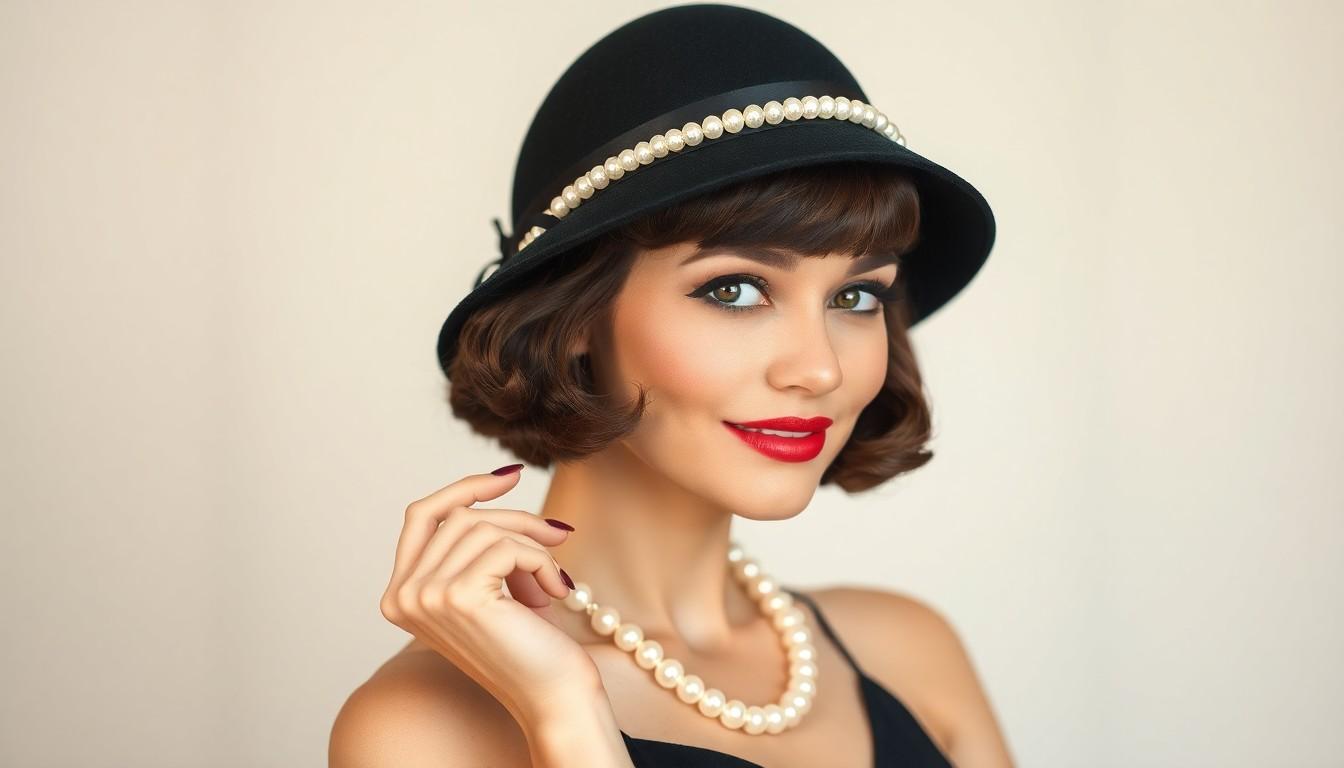
To truly capture the flair of the 1920s, we need to consider the right accessories for our short hair looks. Iconic pieces from the era pull everything together and let us express our personalities with vintage charm.
Popular Hair Accessories of the 1920s
Hats took center stage for women with bobs and cropped cuts. We see cloche hats, snug and stylish, perfectly framing shorter hair and adding that unmistakable Jazz Age silhouette. Headbands and turbans pop up everywhere in vintage photos—sometimes sleek and pearl-studded, sometimes bold with metallic or velvet fabrics. Bobby pins became essential for holding waves and curls in place, even for shorter lengths. Finishing touches like barrettes and clips gave our looks extra sparkle, with art deco-inspired designs securing stray hairs and highlighting the shape of our haircut.
Tips for Matching Accessories to Outfits
Keeping our daytime looks neat means reaching for cloche hats or simple headbands. Neutral-toned hats work especially well with everyday flapper dresses or relaxed separates, keeping things cohesive and modern. When we head out for evening events, switching to a turban or adding decorative barrettes brings instant glamour. Choosing accessories in colors that match our dresses or wraps makes our style feel thoughtfully put together. We always aim for balance—since the bob itself makes a strong statement, our accessories should enhance, not outshine, the haircut. Matching textures, like a velvet headband with a beaded dress, helps tie everything together. By sticking to these simple rules, we honor the original 1920s approach and make every outfit shine.
Achieving the Eton Crop Style
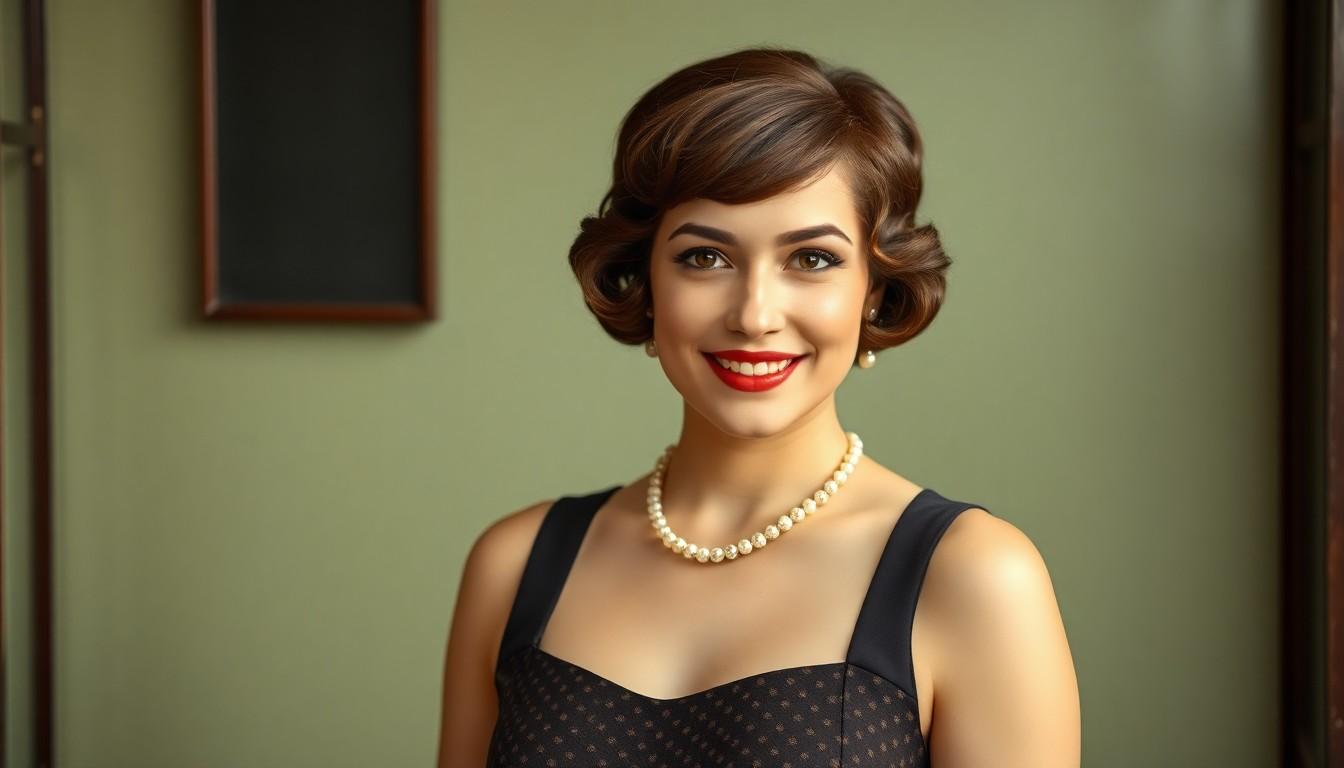
Let’s talk about the boldest look in 1920s short hair: the Eton crop. This style stands out for its daring length and its unmistakable charm, so we’ll break down exactly how to get it right and who wears it best.
How to Cut and Style an Eton Crop
We start with a close cut above the ears, using scissors or clippers to trim hair right against the scalp. Shaving or trimming the back super short gives the shape its signature sharpness. After that, keeping the front and sides a little longer lets us create those soft curls or waves that soften the look. Styling comes into play next—finger waving or using marcel irons gives an authentic 1920s vibe, while a dollop of pomade or styling cream helps set the curls in place. A fine-tooth comb helps us refine those waves, making sure every curve feels intentional yet fresh.
Face Shapes That Suit the Eton Crop
We’ve found that heart-shaped faces look balanced with this cut, since the short back and styled front play nicely with a wider forehead. Oval faces get an effortlessly harmonious look, as they can pull off almost any hairstyle, including an Eton crop. Square faces also benefit, with loose curls in the front lending softness that flatters strong jawlines. On the other hand, round faces might find this style makes the face look even rounder, though with a few tweaks to the curls or wave placement, it can still work. Eventually, trying different wave patterns and front lengths can help anyone personalize the Eton crop to suit their style and features.
Mastering the Marcel Wave Technique
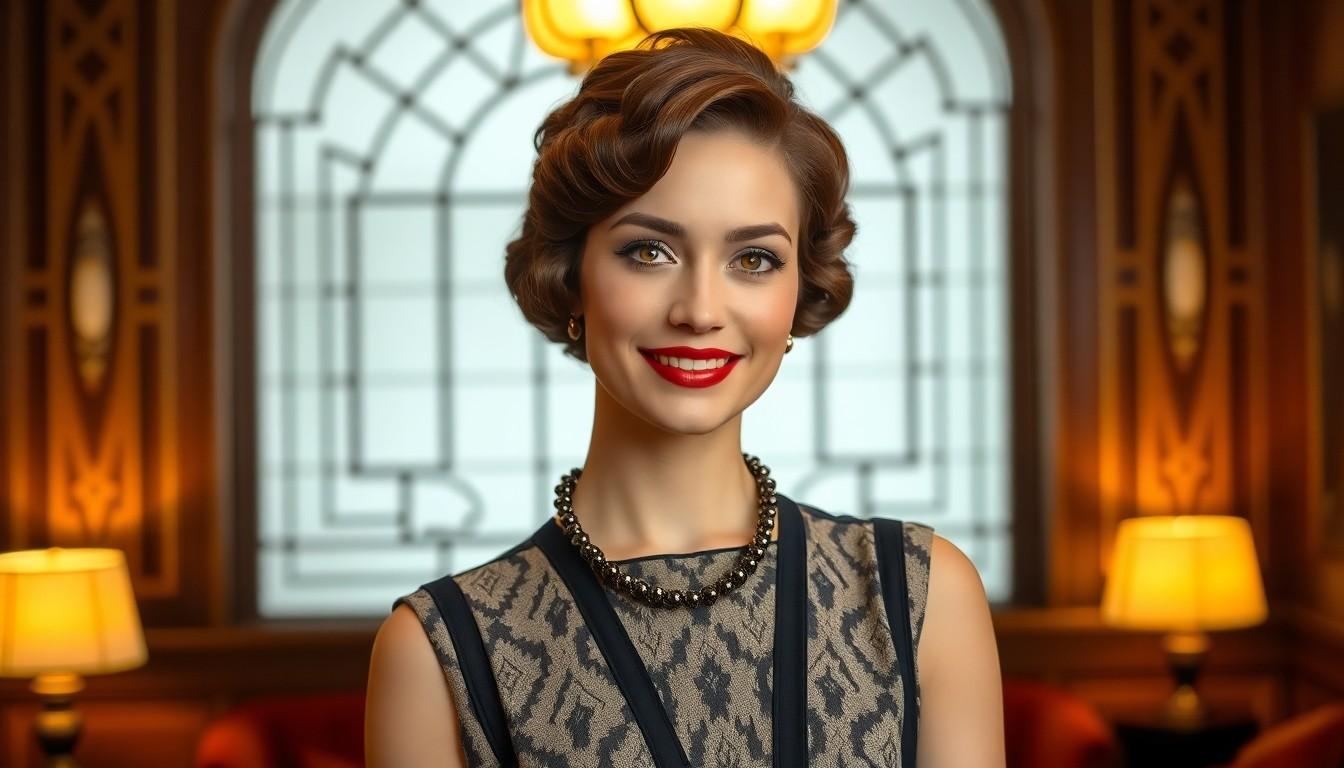
Getting the Marcel wave just right can transform any short hairstyle into a true 1920s statement. We love how this heated technique brings glamorous definition and authentic vintage texture to short cuts.
Marcel Wave vs. Finger Wave: Key Differences
Let’s clear up what sets Marcel waves apart from finger waves. Marcel waves rely on heated Marcel irons to shape deep and lasting waves, giving us that structured, uniform look across the hair. We notice how these iron-set waves hold their shape well through the day, working beautifully for both short and longer hair lengths. For finger waves, our fingers and a comb do the shaping, using a styling product to help set soft, “S” shaped curves without any heat. This approach feels gentler but creates a style that tends to be more delicate and easy to reshape. When we want waves to last and keep their crisp, professional edge, Marcel waves always take the lead.
Products for Long-Lasting Marcel Waves
We always reach for a few must-have products to keep our Marcel waves flawless. Hair pomade or oil helps us set waves securely while boosting shine for that glossy finish. Hair pins and clips allow us to hold each section in place as the wave cools and sets, preventing those perfect ridges from losing shape. Setting lotion is something we apply before styling with the Marcel iron, giving every wave extra staying power. We often find that adding a hat or headband not only protects our finished style from wind and humidity but also channels even more vintage 1920s flair. Using these essentials together means our Marcel waves can last well into the evening—no touch-ups needed.
Maintaining and Modernizing 1920s Hairstyles
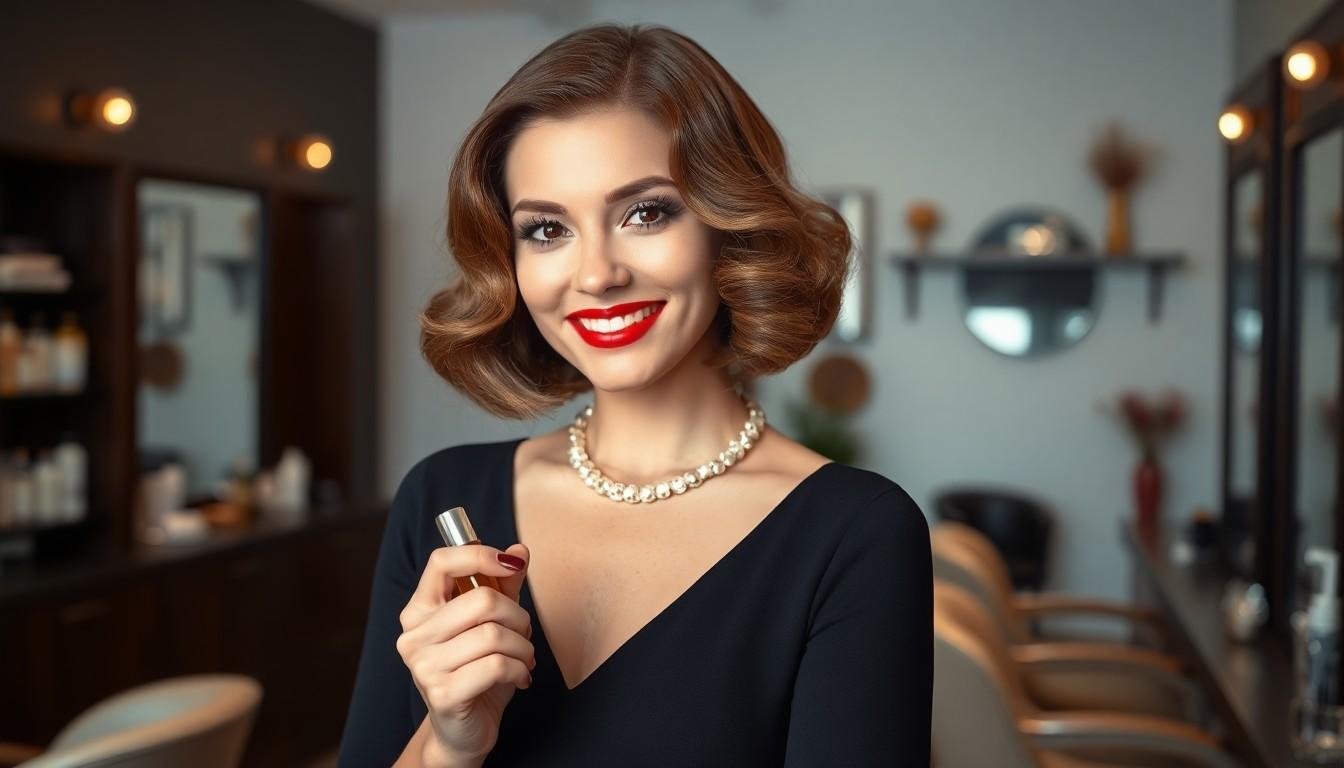
Let’s keep those short 1920s looks fresh and period-perfect, while exploring ways to give them a modern twist too. Here’s how we can care for our vintage styles and keep things up-to-date.
Care Tips for Vintage-Inspired Styles
We always make regular trims a priority, as consistent cuts are the secret to a defined bob or shingle cut. Visiting a stylist who understands vintage shapes ensures the classic angles and lengths stay authentic every time. Using lightweight wax or pomade gives us the structure and sheen that made 1920s hair so iconic. For curly bobs, applying a curl-defining cream helps those natural waves pop without turning heavy, letting our hair stay playful instead of sticky. Washing with a gentle shampoo keeps our scalp and short strands healthy, while a wide-tooth comb prevents unnecessary breakage—especially when hair is wet after styling. Smoothing strokes of hair serum tame frizz, so our slick, glossy finishes hold up all day no matter what accessories or hats we choose.
Updating 1920s Looks for Today
We can instantly modernize a bob by blending in a few subtle layers, adding movement and more texture for a carefree vibe. Trying an asymmetrical cut brings a contemporary edge while still nodding to our favorite decade. Texturizing sprays or a spritz of dry shampoo transform that classic bob from sculpted perfection to effortless, tousled glamour. Coloring also matters—lighter balayage or ombre highlights deliver a fresh, trendy contrast to single-process shades of the past. Swapping ornate hats or elaborate turbans for minimalist headbands or a simple hair clip gives us a more subtle, wearable style. Tiny barrettes or hair jewelry nod to the jazz age’s elegance without feeling costume-y. That’s how we combine the best of vintage flair with modern-day taste.
Conclusion
Exploring 1920s hairstyles for short hair lets us embrace vintage glamour while expressing our own unique style. Whether we’re drawn to sleek finger waves or playful pin curls there’s a look for every occasion and personality. With the right techniques and accessories we can channel the spirit of the Roaring Twenties and turn heads wherever we go.
Let’s keep experimenting with these timeless styles and make them our own—because short hair deserves to shine with vintage flair just as much as any other length.
Frequently Asked Questions
What are some popular 1920s hairstyles for short hair?
Popular 1920s hairstyles for short hair include finger waves, the classic bob, soft pin curls, sleek side parts, and the Eton crop. Each style brings vintage flair and can be updated with modern twists or accessorized for special occasions.
How do I create finger waves on short hair?
To create finger waves, start with damp hair, divide it into sections, and shape each section into “S” curves using your fingers and a comb. Secure the waves with clips until dry, then remove the clips for a polished 1920s look.
Can I style a faux bob with very short hair?
Yes, a faux bob can be achieved with short hair by tucking sections behind your ears and using bobby pins to secure them. For slightly longer hair, roll the ends under and pin them at the nape for an authentic 1920s effect.
What accessories work best with 1920s hairstyles for short hair?
The best accessories include jeweled combs, feather headbands, cloche hats, decorative barrettes, and sequined turbans. Choose accessories that complement both your hairstyle and outfit for a cohesive vintage-inspired look.
What is the Eton crop and who does it suit?
The Eton crop is a super-short 1920s haircut, cropped above the ears with softly curled or waved front sections. It suits heart-shaped, oval, and square faces best, while round faces may need adjusted wave placements for balance.
How do Marcel waves differ from finger waves?
Marcel waves are made with a heated curling iron for structured, defined waves, while finger waves are styled using the fingers and a comb for a softer, more organic look. Both are classic 1920s techniques for short hair.
How can I modernize 1920s hairstyles for today?
You can modernize 1920s hairstyles by adding subtle layers, asymmetrical cuts, or incorporating trendy color techniques like balayage. Swap bold accessories for minimal pieces to blend vintage charm with a current, fashionable vibe.
What hair texture works best for 1920s finger waves?
Medium to fine hair holds finger waves the best, but naturally wavy or curly hair adds extra depth and texture to the style. Heavier, coarse hair may need additional styling products for best results.
How do I maintain 1920s-inspired short hairstyles?
Maintain your style with regular trims and lightweight products like pomade or styling wax to define waves and add shine. Store your hair accessories safely and use gentle cleansing routines to keep your style looking fresh and polished.
Are 1920s hairstyles suitable for themed parties and everyday wear?
Yes, 1920s hairstyles are perfect for themed parties, vintage events, and even everyday wear when styled subtly. By choosing the right accessories or toning down the drama, these looks can easily fit various occasions.

